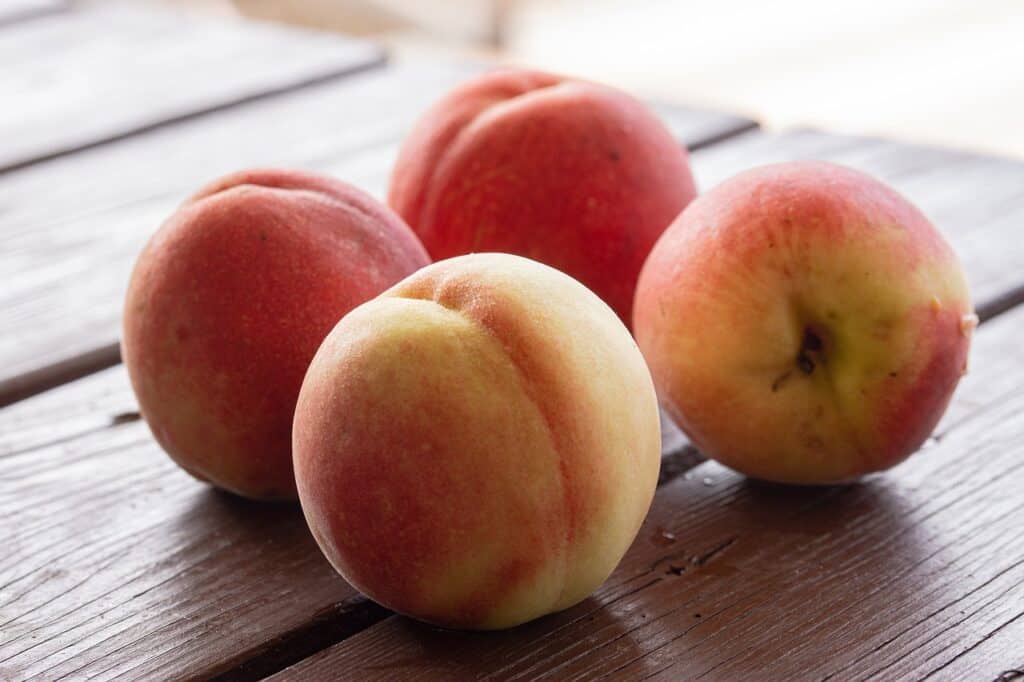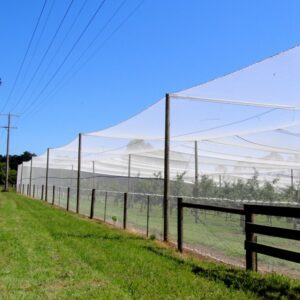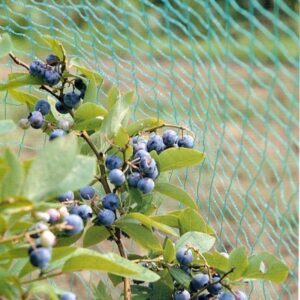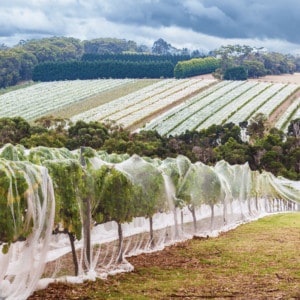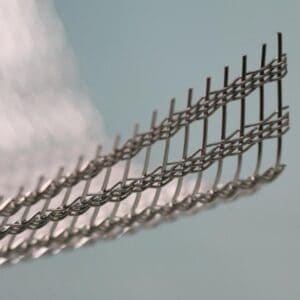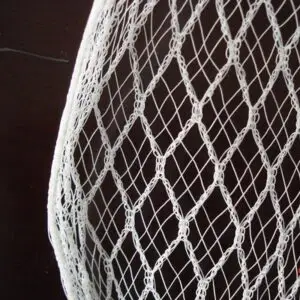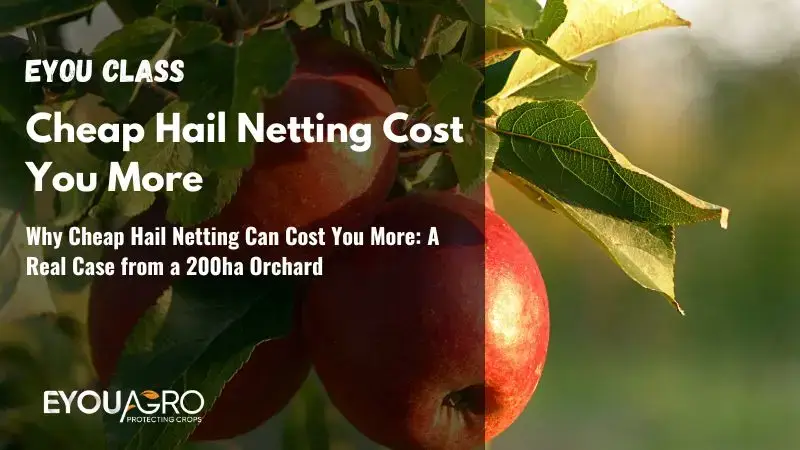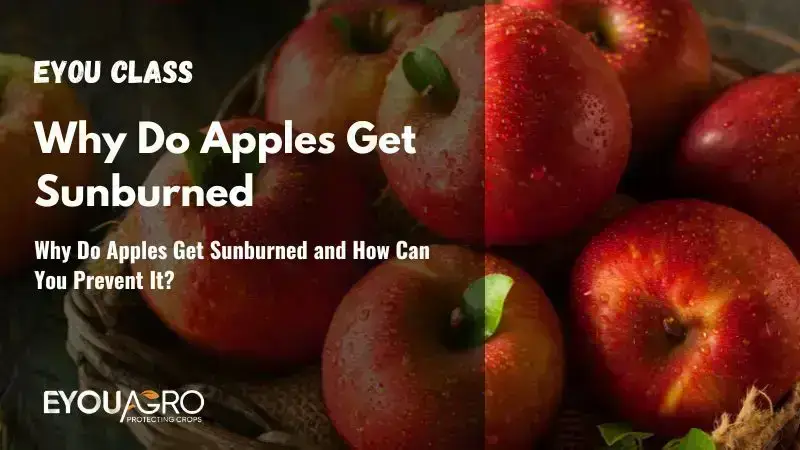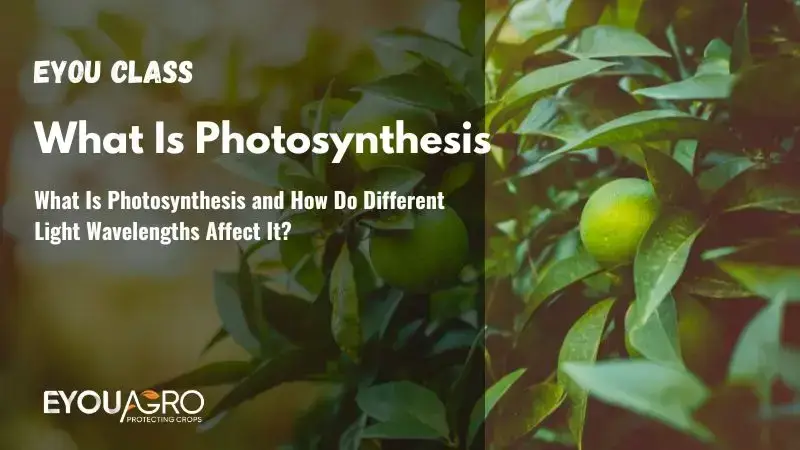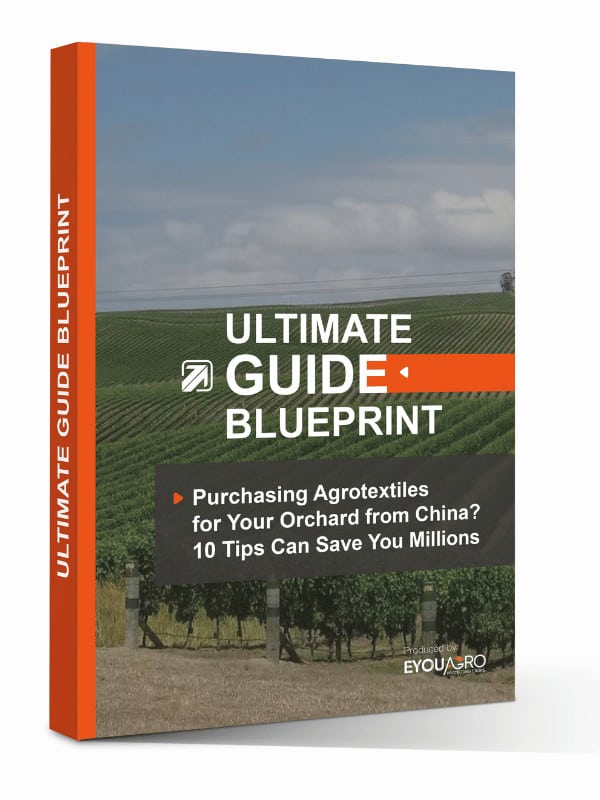Introduce
As a farmer, you know that there are some things in life you can’t control: how much rain falls and the price of produce at the market. You work hard to grow healthy crops and manage pests and diseases, but sometimes Mother Nature has other plans for your peach tree.
Growing your peach trees can be a rewarding experience. However, no matter how you care for them, challenges do arise from time to time. Peach trees just like other trees and humans are susceptible to various diseases.
Peach tree diseases can be a real pain in the butt. There are many different types of peach tree diseases and each has its unique symptoms. If you’re looking for a way to treat your diseased peach trees, then you’ve come to the right place!
In this blog post, we will go over some common diseases that affect peach trees and how best to treat them, but before that let’s look at the benefits of growing peach.
Benefits of Growing Peach Trees
- They contribute to healthy digestion
- It May help to control heart diseases.
- They maintain a soft and healthy skin
- They reduce some allergies.
- They boost your immunity
- It Prevents high blood sugar levels.
Now that you have seen how beneficial peach fruits are to your health, let’s look at some of the diseases that plaque your peach trees and how to treat them. After all, you do not want a disease to snatch your hard-earned fruits.

Common Peach Tree Diseases and How to Treat Them
Trees do not cry out in pain. Right? They cannot alert humans when something is incorrect. So, it is your responsibility to detect and treat the diseases before they cause irreversible damage. Keep an eye out for the following common peach tree diseases and treat them accordingly.
1. Anthracnose, Crater Rot
A tiny yellow spot on the fruit surface is the first sign of anthracnose. This spot develops over time into a circular, hollow, on the fruit’s surface. The rot persists then in the affected area turns a grayish-black color.
Cause
A fungus, Colletotrichum, causes the disease.
Treatment
- Remove any diseased plant from your garden.
- Prune dead wood and destroying infected leaves are good practices for trees.
- Spray a copper-based fungicide on your plants.
2. Bacterial Canker
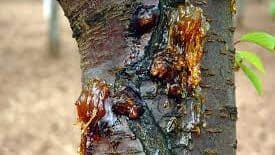
This disease attacks a tree’s twigs and branches, preventing the development of flowers and vegetative buds. Its primary symptom is elongated cankers.
Cause
A fungus, Cytospora leucostoma, causes peach cankers. These fungi are weak; they will rarely attack your peach tree if it’s healthy.
Treatment
Prune all the affected twigs and branches. After you have pruned the branches burn or remove them immediately. Planting new peach trees near canker-infected trees is not recommended.
Try spraying copper-based fungicides.
3. Bacterial Spot
This disease can affect the small branches and fruit of your plants. The first sign is wet spots on the leaves. The spot may become darker, and the affected leaf turns yellow. The same Spots may appear on the fruit, causing harm and allowing other bacteria to enter. To assess this bacterium, Look for angular lesions on the leaves.
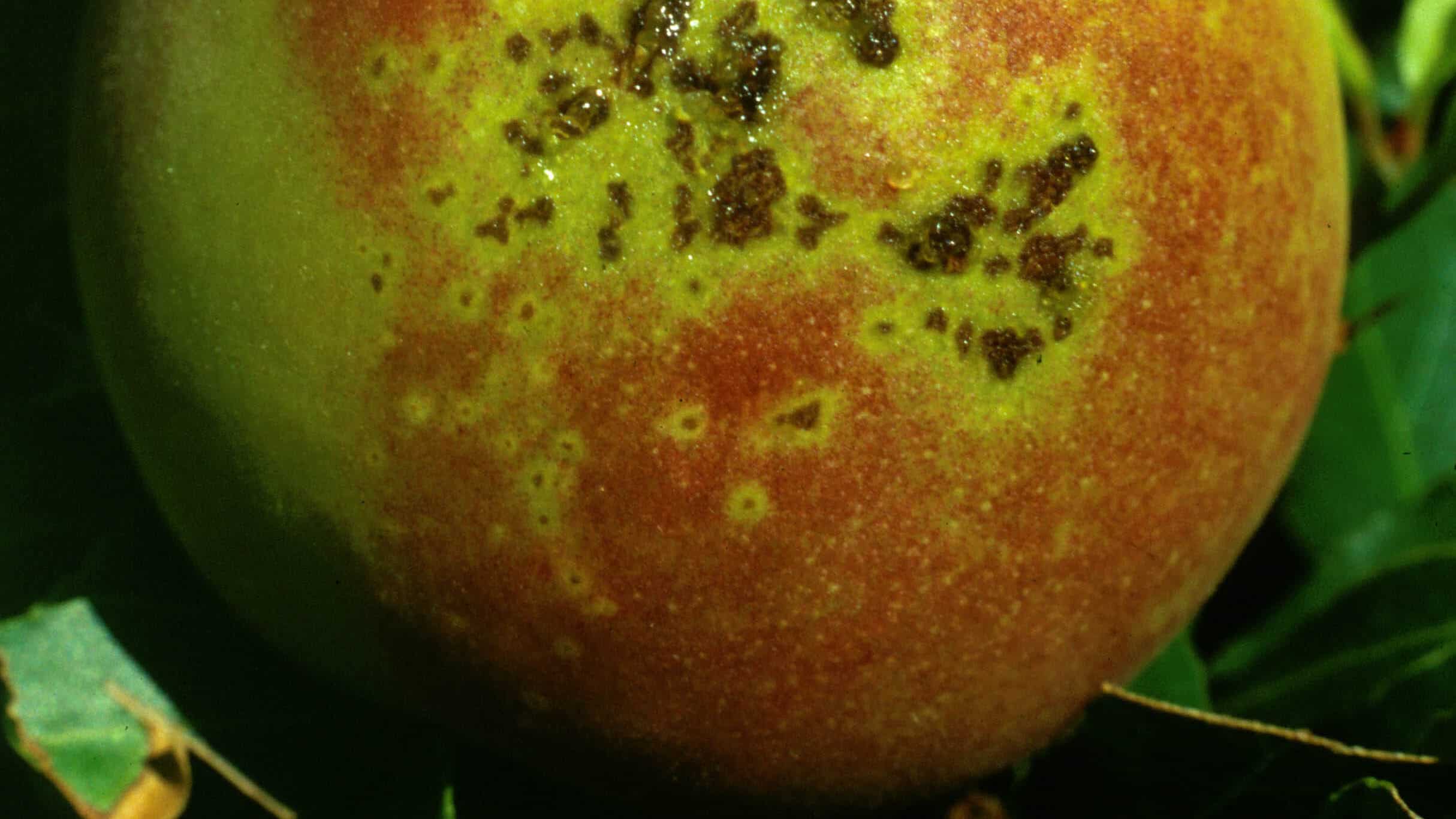
Cause
The bacterium that causes it is called Xanthomonas campestris PV. Pruni.
Treatment
It would be best if you used the recommended fungicides. Apply the fungicides after two weeks. Early in the season, check twigs for peach scab lesions to anticipate and plan fungicide applications.
4. Blossom Blight
Blossom Blight appears once trees start to bloom, causing the blossoms to turn tan. The flowers then hang down as if frost has damaged them. Once the disease begins, it spreads quickly to the twigs, branches, leaves, and fruit. The impacted wood becomes gummy.
Cause
The fungus Monilinia fructicola causes this disease.
Treatment
Fungicides are essential in the treatment of this disease. You should start a fungicide spray program immediately when the trees begin to bloom to control this disease. Use the fungicide all through the growing season.
5. Botryosphaeria Fruit Rot
This disease wreaks havoc on the fruit, causing circular lesions. This bacterium is often confused with anthracnose. Botryosphaeria, on the other hand, causes softer lesions. It mainly affects weak plants.
Cause
The fungus Botryosphaeria dothidea causes the disease.
Treatment
When you notice panicles appearing, apply fungicides. You can use both fungicide and pruning treatment.
6. Armillaria Root Rot
It is a fungus that lives in the soil. Armillaria Root Rot wreaks havoc on plant roots and crown tissue. Wilting, bronzing, and later chlorosis of foliage are the first visible symptoms. Foliar collapses next, followed by tree death. Investigation reveals a well-developed mycelial mat beneath the root bark. Later, gill-type mushroom bunches will emerge at the bottom of dead and dying trees.
Cause
It is caused by the fungus Armillaria.
Treatment
There is no one-size-fits-all treatment for Armillaria root rot. The disease can be controlled by regularly removing dead trees and infected stumps.
7. Powdery Mildew
Powdery mildew can affect your peach tree’s leaves as well as its fruit. When peach leaves become infected, they lose their shape and become droopy. Also, the affected fruit develops a white powder on the surface.
Cause
Species of fungi cause this disease in the order Erysiphales.
Treatment
Combine three tablespoons of potassium bicarbonate, three tablespoons vegetable oil, and 1/2 teaspoon soap. Apply the spray to the affected plants. Then,
- Remove infected leaves and stems.
- Water the soil rather than the plants
8. Leaf Curl
It is a common pathogen that affects peach trees. It causes the leaves to turn reddish, curl, and fall off the tree. First, it affects your tree in the early spring, when the fungus spores infect the leaf buds, and then the fungus extends to the leaves themselves.
Cause
The leading cause of this disease is the fungus Taphrina deformans.
Treatment
If you suspect leaf curl, the first thing you should do is add nitrogen and water heavily. After you’ve taken these stress-relieving measures, spray the trees with a copper-based fungicide.
Conclusion
As a peach farmer, keep checking the health of your tree. If you notice any change, kindly contact a tree specialist. If you cant manage the disease, prune the tree and dispose of the pruned twigs or branches to avoid spreading the disease to other trees. Always use the recommended fungicides, and that won’t harm your tree.
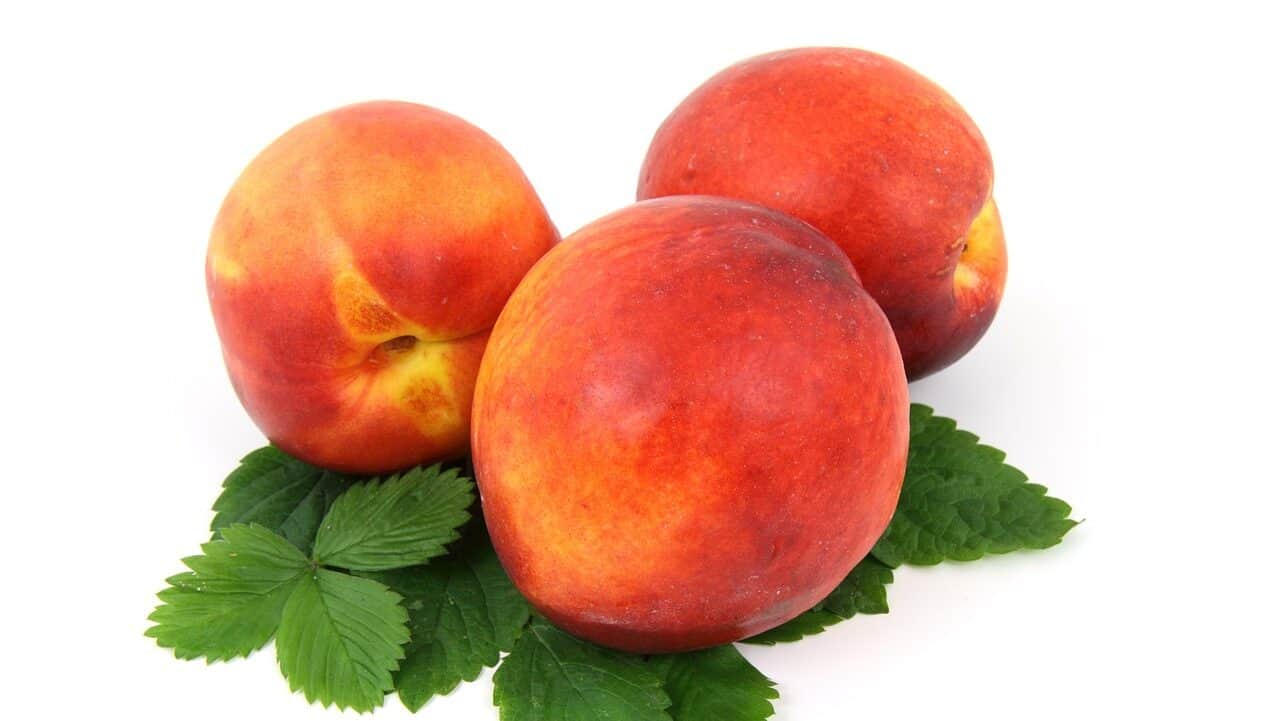
In addition, tree netting is a successful way to protect your peach trees. Just like any other fruit, your peach also needs protection from animals and birds. Please cover them right after the pollination. Where will you get these nets? You can get them at Eyouagro; Here, we offer you fruit nets that come in different mesh sizes. Our team is always there, ready to assist you in picking the right net for your peach trees.
Send us an email at info@eyouagro.com for inquiry or to complete your order. Visit our website at EyouAgro for more details.

